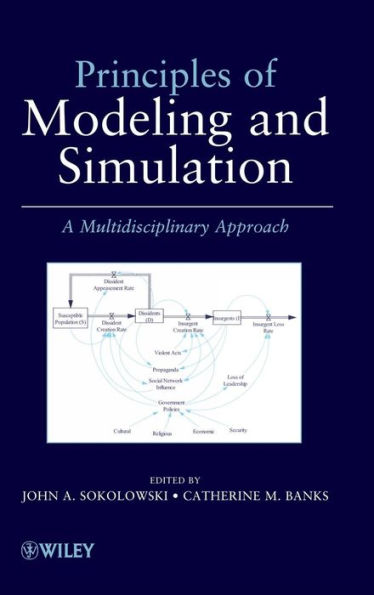Table of Contents
Preface.
Contributors.
PART ONE: PRINCIPLES OF MODELING AND SIMULATION: A MULTIDISCIPLINARY APPROACH.
Chapter 1: What is Modeling and Simulation?
Introduction.
Models: Approximations of Real World Events.
A Brief History of Modeling and Simulation.
Application Areas.
Using Modeling and Simulation: Advantages and Disadvantages.
Conclusion.
Key Terms.
Further Reading.
References.
Chapter 2: The Role of Modeling and Simulation.
Introduction.
Using Simulations to Solve Problems.
Uncertainty and Its Effects.
Gaining Insight.
A Simulation’s Lifetime.
Conclusion.
Key Terms.
Further Reading.
PART TWO: THEORETICAL UNDERPINNINGS.
Chapter 3: Simulation: Models That Vary Over Time.
Introduction.
Discrete Event Simulation.
Continuous Simulation.
Conclusion.
Key Terms.
References.
Chapter 4: Queue Modeling and Simulation.
Introduction.
Analytical Solution.
Queuing Models.
Sequential Simulation.
SimPack Queuing Implementation.
Parallel Simulation.
Conclusion.
Key Terms.
Further Reading.
References.
Chapter 5: Human Interaction with Simulations.
Introduction.
Simulation and Data Dependency.
Visual Representation.
Conclusion.
Key Terms.
References.
Chapter 6: Verification and Validation.
Introduction.
Performing Verification and Validation.
Verification and Validation Examples.
Conclusion.
Key Terms.
References.
PART THREE: PRACTICAL DOMAINS.
Chapter 7: Uses of Simulation.
Introduction.
The Many Facets of Simulation.
Experimentation Aspect of Simulation.
Experience Aspect of Simulation.
Examples of Uses of Simulation.
Ethics in the Use of Simulation.
Some Excuses to Avoid Simulation.
Conclusion.
Key Terms.
Further Exploration.
References.
Appendix A-Simulation Associations/Groups/Research Centers.
CHAPTER 8: MODELING AND SIMULATION: REAL-WORLD EXAMPLES.
Introduction.
Transportation.
Business M&S.
Medical M&S.
Social Science M&S.
Conclusion.
Key Terms.
Further Reading.
References.
Chapter 9: The Future of Simulation.
Introduction.
A Brief . . . and Selective . . . History of Simulation.
Convergent Simulations.
Serious Games.
Human-Simulator Interfaces.
Computing Technology.
The Role of Education in Simulation.
The Future of Simulation.
Index.






